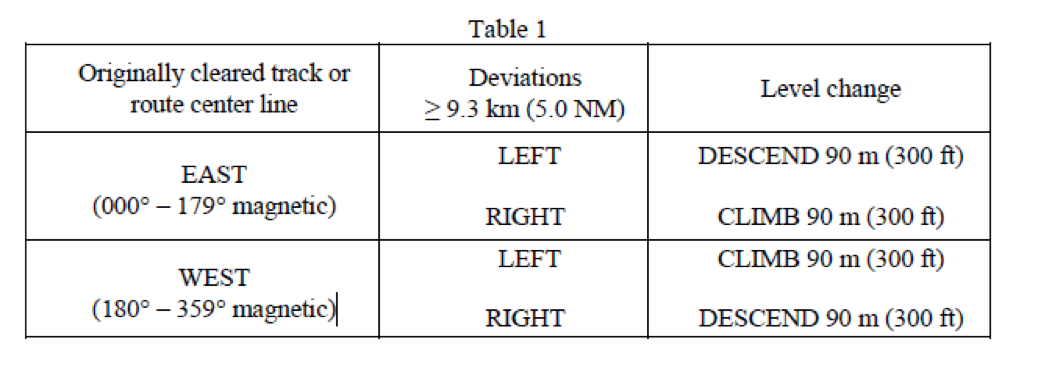The use of the new procedures for Oceanic Contingencies and Weather deviation Procedures is coincident with the start of the Advanced Surveillance-Enhanced Procedural Separation, known as (ASEPS) trials which takes advantage of Spaced Based (SB ADS-B ). The SAT ADS-B trials will in effect reduce our separation requirements and allow ATC to apply these reductions if the aircraft is equipped with FANS 1/A+ CPDLC, ADS-C, RNP4, RCP240, and RSP180 capable and equipped with ADS-B. The new procedures go into effect 28 March 2019. Your ScottIPC App containing these procedures will be updated to reflect the new procedures on the 28th as well.
The following is only a brief overview of the new procedures. Please ensure you read the NAT Ops Bulletin cited and linked below.
ADS-B was developed to be used over the VHF ground ATS network. With the new use of ADS-B over Satellite, ATC can gather information to allow the reduction of separations in Oceanic and Remote Oceanic airspaces. With this reduction of separation comes the need to deconflict aircraft in a contingency situation where they have left the assigned route without a clearance from ATC. The current contingency procedures in use today must be used until the spaced based ADS-B trials begin in march 2019. When the ASEPS trials start, any aircraft experiencing the following situations would follow these new procedures.:
a) Inability to comply with assigned clearance due to meteorological conditions;
b) en-route diversion across the prevailing traffic flow (for example, due to medical; and
c) loss of, or significant reduction in, the required navigation capability when operating in an airspace where the navigation performance accuracy is a prerequisite to the safe conduct of flight operations, or pressurization failure
The new Special Procedures for In-Flight Contingencies in Oceanic Airspace effectively reduces the offset from 15 NM’s off route to 5NM off route, flying parallel to the assigned cleared route. You will also notice that that there is no altitude loss or gain as you drive out to the 5NM parallel offset. Todays rules have you descend or climb 500ft (If below FL410) when you are 10NM’s off course enroute to a 15NM parallel offset. Again, it will be 5NM offset with no climb or descent before reaching the offset. Once on the offset:
a) “descend below FL 290, and establish a 150 m (500 ft) vertical offset from those flight levels normally used, and proceed as required by the operational situation or if an ATC clearance has been obtained, proceed in accordance with the clearance; or
Note. — Descent below FL 290 is considered particularly applicable to operations where there is a predominant traffic flow (e.g. east-west) or parallel track system where the aircraft’s diversion path will likely cross adjacent tracks or routes. A descent below FL 290 can decrease the likelihood of: conflict with other aircraft, ACAS RA events and delays in obtaining a revised ATC clearance.
b) establish a 150 m (500 ft) vertical offset (or 300 m (1000 ft) vertical offset if above FL 410) from those flight levels normally used, and proceed as required by the operational situation, or if an ATC clearance has been obtained, proceed in accordance with the clearance.”
These new procedures will apply regardless of the routing you are flying, I.E the tracks or a random route (what they call User preferred routings).
WEATHER DEVIATION PROCEDURE:
The Weather Deviation Procedure will also change on 28 March 2019.
The change to this procedure concerns the trigger point for a 300ft climb or descent. If the aircraft cannot obtain a clearance to deviate for weather then they would initiate a climb or descent of 300ft passing 5NM’s off route. The chart below is used. Again the ICRH will reflect this change on 28 March 2019. The current procedures are to be used until that time.

Resources:
NAT Doc 007 has been updated to reflect the new procedures briefly discussed above. In our resource vault you will find two copies of NAT Doc 007: v2018-2 in effect until 27 Mar 2019 and the new version v2019-1 with an effective date of 28 March 2019
Take the time to read the new NAT Ops Bulletin 2018_005 rev 1 for full details.
Written by Shawn Scott 12/21/2018
